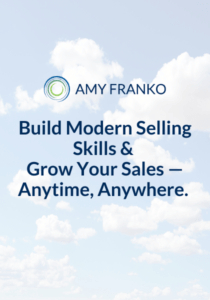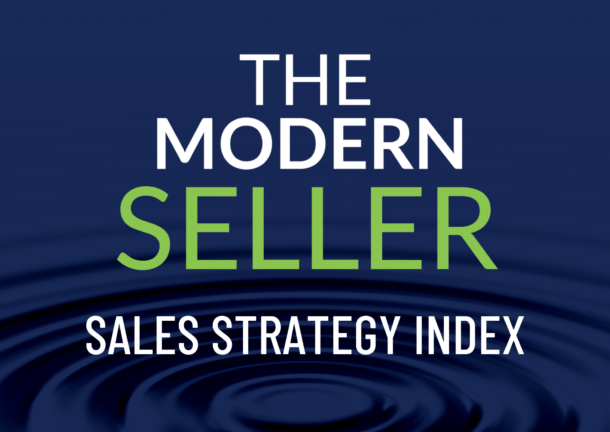"*" indicates required fields
You can elevate your sales strategy with impactful sales conversations. This article shares a proven 5-point framework to include in sales training for mastering sales conversations.
*******
When it comes down to it, sales is a conversation.
In this article, I will share a framework that will help you rethink your sales conversations as part of your sales training. I consider sales conversations as earning time with our high-impact relationships.
What are High-Impact Relationships?
First, let’s review what high-impact relationships are. There are four major relationship types that it pays dividends to nurture in modern selling:
- Decision Makers – those who holds the budget authority for the type of work that you are looking to do with your clients, the types of problems that you’re helping them to solve.
- Centers of Influence – a person that’s well-connected and really understands the value of what it means to build networks. They get what you’re trying to accomplish, and they’re strategic thinkers. As a result, they are willing to open doors for you, and to provide insights beyond what you might learn otherwise. It can also be organization, one that provides an environment for you to build those strategic relationships.
- Advocates – These are the people who are willing to invest their reputational or social capital on your behalf to make introductions, open doors, and share information with you that you may not be able to learn otherwise in public forums. Note: there is a big difference between someone who is friendly towards us, who likes us, who likes to work with us, and someone who’s willing to advocate on our behalf. You always know the difference when someone is willing to advocate, when they are willing to open a door for you, they are willing to help you move up the decision-making chain of command.
- Strategic partnerships – Sometimes I’ll refer to these as strategic alliances. They are your external relationships. They are the organizations and individuals that are also calling into your clients and prospects, but they are selling a noncompetitive product or service.
If you’re planning out your sales conversations and prospecting, home in on those relationships.
How Much Value Are You Delivering in Your Sales Conversations Now?
A few years back, I had the opportunity to speak at the Association of Talent Development (ATD) annual convention.
One statistic I learned really stuck with me. They had a presenter from Florida State University who shared some interesting data that’s relevant to this sales conversations. If you had to guess, how much time of a one hour sales meeting is actually relevant to your decision makers? You’re likely way off. The shocking answer to that question was six minutes. In only six minutes out of one hour did the decision maker see value.
Ouch.
Whether you buy into the statistic or not, the major concept I want you to take to heart is that sometimes we overestimate ourselves, and we aren’t as valuable in the eyes of a buyer, client, or prospect as we would like to be. We all have opportunity for improvement when it comes to the time that we’re earning with high impact relationships—to ensure we are not only making the most of their time, but our time, too.
The Sales Conversation Framework
Now I will introduce a framework to help you do just that. This framework can be applied to any conversation you can think of: discovery meetings. Meetings with centers of influence or strategic partners. Proposal reviews. Negotiations. RFP presentations. Closing.
Conversations will look different depending on your scenario, but the idea here is that any interaction is an opportunity to be intentional and plan for the right outcomes. This framework is meant to provide guard rails, and it can be flexed to meet your specific situation.
The elements of the Sales Conversation Framework include:
- Pre-Plan
- Lead the Open
- Dialogue
- Summarize & Close
- Follow Up
You can incorporate this framework as part of your sales training. Let’s take a look at each.
Pre-Plan
Pre-Planning is the first stage of the framework. This is where you plan for success.
- Outcomes
- Agenda & Timing
- Questions & Topics
- Conversation format
- Individual roles
Planning for success begins with thinking through the outcomes you’d like to accomplish. It answers the question, “By the end of this conversation, we will have accomplished…” That question needs to be answered by you and your internal team, as well as your prospect or client. If you know what they want to accomplish by the end of the conversation, then you can set yourself up right.
As you’re planning the aspects of the sales conversation, be clear on the outcomes. Limiting your key outcomes to the vital few will help you create clarity for the agenda and better momentum overall. If you can also think ahead to the meeting after this one…what will get you to that next meeting?
Lead the Open
Have you ever had the experience where you get into the meeting or on the call, and no one is quite sure who’s taking the lead? It’s awkward right?
Most times, it should be you taking the leadership position, especially if you set the meeting and the agenda. It can be audience or situationally dependent. For example, in RFP presentation scenarios you may have a partner or leader taking the lead, or the prospect or client may be kicking things off. The idea here is that you know and are ready, so things launch smoothly.
One strategy that has made a difference for me is to write down what I’d like to say when I’m opening and run through it a couple of times. It doesn’t have to be rehearsed but having it in your notes and ready to go has you prepped.
The lead and opening don’t have to take much time at all to be effective – when it’s done right it will leave you more time for the dialogue, which is where you want to make the most of the time you have.
Dialogue
Thirty minutes goes quickly. If five minutes is taken in introductions, that gives you 20 minutes for a conversation, and 5 minutes to summarize and close. The goal with dialogue is to create a balanced exchange in the overall conversation.
This should include taking pauses for questions and comments. I like to think of it as being able to step outside of myself and view the meeting from above… it’s the meta-view of the meeting. If I’m talking the entire time, it’s not a balanced exchange.
As you’re planning your dialogue, note where you want to pause. I might say something like, “I just shared quite a bit…I’ll take a pause here to see what initial reactions or questions there might be.”
My last strategy is to always take notes. There’s a connection between note-taking and perceived value of the meeting.
Summarize & Close
This piece of the in-meeting framework is all about momentum for next.
In a 30-minute meeting, start a wrap up around 25 minutes.
This is where you want to do a quick compare back with the agenda to make sure everything was covered. I might say something like: “It looks like we covered the items on our agenda. Are there any final questions while we’re here?” “Ok great, I’ll take a quick look at my notes to see what actions we have next.”
I’ll review the action items and who is covering them.
I always leave the door open and will say something like: “If anyone thinks of anything please feel free to call or email. If there is anything I think of while I’m looking through my notes, I’ll reach out through Jane.”
This last point is important.
Always set the next conversation whenever possible. This is a little easier when the meeting is small. It’s a bit tougher when it’s a large group. I recently had a meeting with two others, and we compared calendars before we wrapped up. If it’s a larger group I might say something like: “Jane let’s you and I compare calendars for a quick call, and we’ll use that time to schedule a follow-up with the larger group.”
Whatever you can do to make sure you leave that conversation with the next one set…it’s the one productivity hack that has save me countless emails and keeps momentum.
Follow Up
Sales training sometimes neglects to place importance on the follow up. Follow up is the follow through piece of the sales conversation that usually gets forgotten in the confusion. Here’s what I’ve found to be helpful.
- A handwritten thank you note if that fits the situation. While I don’t do this every time, every time I have done it, it gets commented on.
- An email with a thank you and next steps. This happens the same day or next day.
- Deliver on as many action items as you can as quickly as you can. I find when I jump into action items right after a call or meeting, they’re fresher and I’m not wasting precious time. Some items take longer, but if you can knock out the easy ones you’ll also set yourself apart.
- This is also the time to figure out if there was anything new uncovered, or any pivots. This may be a meeting with someone else at the prospect or client; it may be some revisions to the proposal, or a new need may have been uncovered.
Then the framework can repeat itself with pre-planning for the next conversation.
I explored the sales conversation topic in a Sales Expert Channel talk. Watch here. The related sales productivity talk on agility is here.
Help Your Team Implement the Sales Conversation Framework
Don’t let your competition get an advantage. I can help. If you want to know how to improve your sales conversations and rev up your sales, let’s talk about sales training. Contact me to schedule time for a discovery conversation.



 Our Strategic Selling signature sales training program is now available online. This online sales learning program is ideal for professional services and B2B sales. Get started with 2 free lessons.
Our Strategic Selling signature sales training program is now available online. This online sales learning program is ideal for professional services and B2B sales. Get started with 2 free lessons.